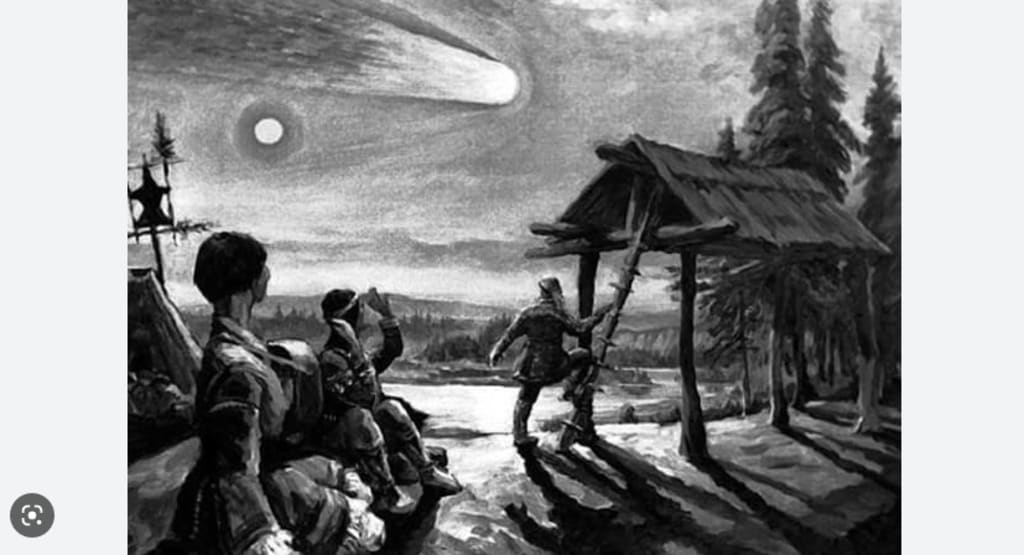The Tunguska Event: Unraveling the Mystery of the Siberian Blast
A Closer Look at the Mysterious Explosion That Shook the Earth in 1908

A Closer Look at the Mysterious Explosion That Shook the Earth in 1908
On June 30, 1908, something exploded in the sky over the remote forests of Tunguska in Siberia, Russia. Witnesses reported seeing a bright flash of light, followed by a loud explosion that flattened trees and knocked people off their feet hundreds of kilometers away. The blast was so powerful that it is estimated to have been equivalent to the detonation of 10-15 megatons of TNT, making it one of the most powerful explosions in human history. However, to this day, no one knows for sure what caused the Tunguska Event.
Theories about the Tunguska Event have been proposed and debated for over a century. Some early theories suggested that the blast was caused by a volcanic eruption or a meteorite impact, while others suggested that it was the result of a nuclear explosion or an alien spaceship crash-landing on Earth. However, as more evidence was gathered and analyzed, some of these theories were ruled out, and new ones emerged.
One of the leading theories about the Tunguska Event is that it was caused by a meteorite or comet exploding in the Earth's atmosphere. This theory is supported by the fact that there was no impact crater found at the site, and by the presence of high levels of iridium in the soil, which is a signature element of extraterrestrial materials. Additionally, the blast was so powerful that it is estimated to have been caused by an object that was at least 50 meters in diameter, which is consistent with the size of a typical asteroid or comet.
However, there are still some mysteries surrounding the Tunguska Event that have yet to be fully explained. For example, some researchers have noted that there is no evidence of any meteorite fragments or debris at the site, despite the fact that such material should have been scattered over a wide area. This has led some to speculate that the object that caused the explosion may have been composed of a volatile substance, such as ice or methane, that vaporized upon entry into the Earth's atmosphere.
Another mystery is the nature of the blast itself. The Tunguska Event was not a typical explosion, in that there was no fireball or shockwave that would be expected from an explosion caused by conventional explosives. Instead, the explosion was characterized by a massive blast of air that flattened trees and buildings over an area of about 2,000 square kilometers. Some researchers have suggested that this may have been caused by a phenomenon known as an airburst, in which a high-speed object explodes in the atmosphere, creating a shockwave that can cause widespread damage.
Despite the many mysteries surrounding the Tunguska Event, researchers continue to study the phenomenon in order to learn more about its causes and implications. In recent years, advances in technology have allowed scientists to conduct more detailed analyses of the site, including studies of the soil, trees, and other materials that were affected by the blast. Additionally, computer simulations and modeling have been used to recreate the explosion and explore different scenarios that could explain its cause.
In conclusion, the Tunguska Event remains one of the most enigmatic and intriguing mysteries in the history of science. While many theories have been proposed and debated over the years, no one knows for sure what caused the explosion that shook the Earth in 1908. However, with ongoing research and investigation, we may one day be able to unravel the secrets of this mysterious event and gain new insights into the workings of the universe.






Comments
There are no comments for this story
Be the first to respond and start the conversation.